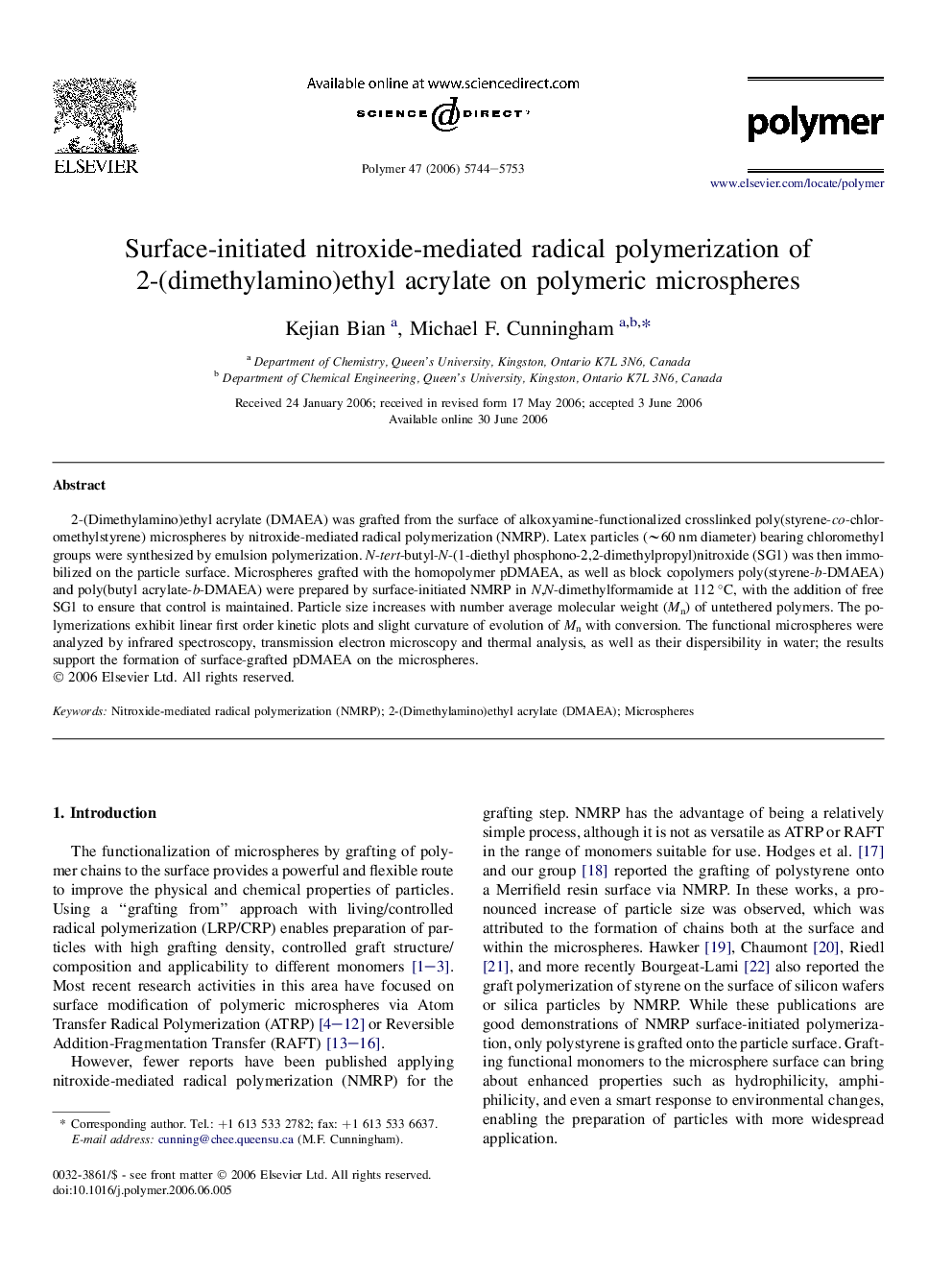| Article ID | Journal | Published Year | Pages | File Type |
|---|---|---|---|---|
| 5190635 | Polymer | 2006 | 10 Pages |
Abstract
2-(Dimethylamino)ethyl acrylate (DMAEA) was grafted from the surface of alkoxyamine-functionalized crosslinked poly(styrene-co-chloromethylstyrene) microspheres by nitroxide-mediated radical polymerization (NMRP). Latex particles (â¼60 nm diameter) bearing chloromethyl groups were synthesized by emulsion polymerization. N-tert-butyl-N-(1-diethyl phosphono-2,2-dimethylpropyl)nitroxide (SG1) was then immobilized on the particle surface. Microspheres grafted with the homopolymer pDMAEA, as well as block copolymers poly(styrene-b-DMAEA) and poly(butyl acrylate-b-DMAEA) were prepared by surface-initiated NMRP in N,N-dimethylformamide at 112 °C, with the addition of free SG1 to ensure that control is maintained. Particle size increases with number average molecular weight (Mn) of untethered polymers. The polymerizations exhibit linear first order kinetic plots and slight curvature of evolution of Mn with conversion. The functional microspheres were analyzed by infrared spectroscopy, transmission electron microscopy and thermal analysis, as well as their dispersibility in water; the results support the formation of surface-grafted pDMAEA on the microspheres.
Keywords
Related Topics
Physical Sciences and Engineering
Chemistry
Organic Chemistry
Authors
Kejian Bian, Michael F. Cunningham,
